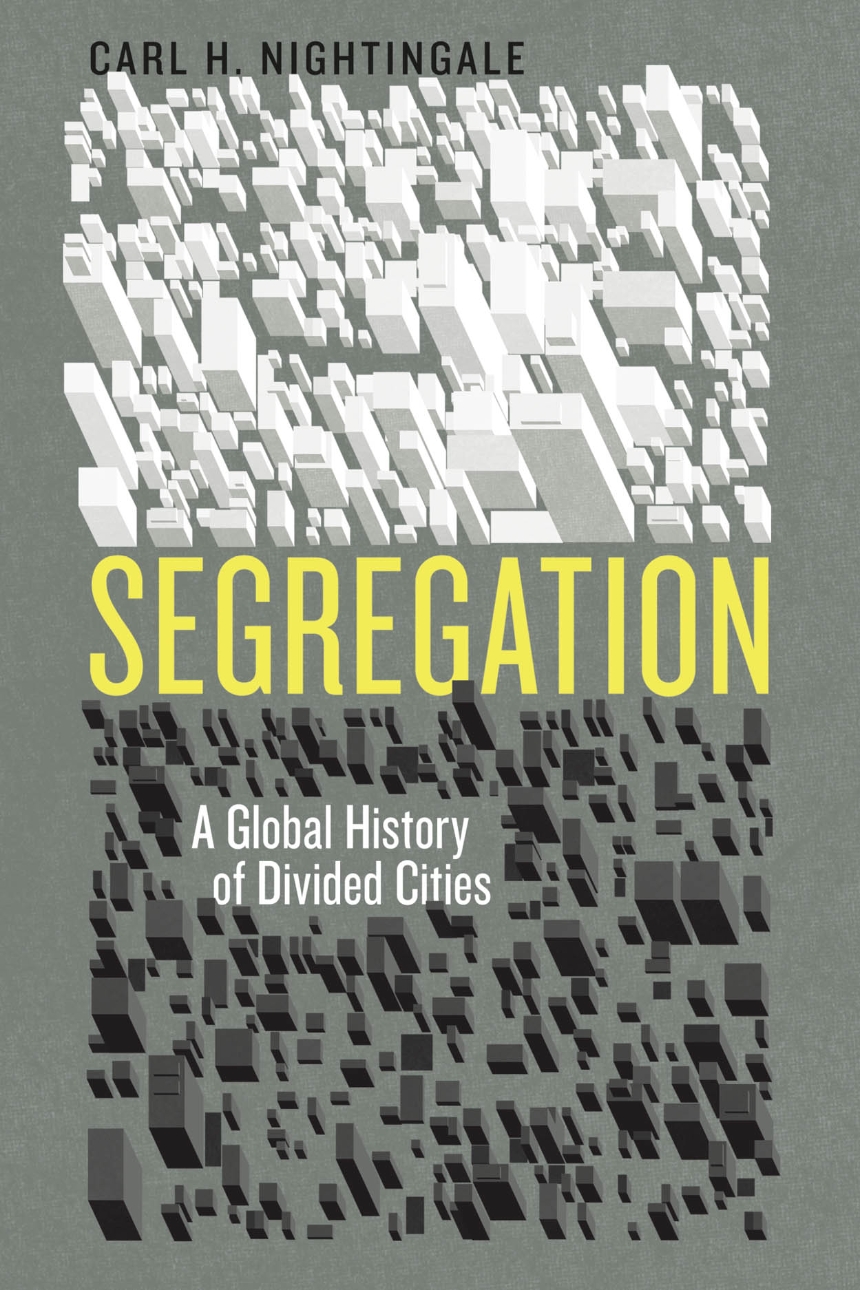Segregation
A Global History of Divided Cities
When we think of segregation, what often comes to mind is apartheid South Africa, or the American South in the age of Jim Crow—two societies fundamentally premised on the concept of the separation of the races. But as Carl H. Nightingale shows us in this magisterial history, segregation is everywhere, deforming cities and societies worldwide.
Starting with segregation’s ancient roots, and what the archaeological evidence reveals about humanity’s long-standing use of urban divisions to reinforce political and economic inequality, Nightingale then moves to the world of European colonialism. It was there, he shows, segregation based on color—and eventually on race—took hold; the British East India Company, for example, split Calcutta into “White Town” and “Black Town.” As we follow Nightingale’s story around the globe, we see that division replicated from Hong Kong to Nairobi, Baltimore to San Francisco, and more. The turn of the twentieth century saw the most aggressive segregation movements yet, as white communities almost everywhere set to rearranging whole cities along racial lines. Nightingale focuses closely on two striking examples: Johannesburg, with its state-sponsored separation, and Chicago, in which the goal of segregation was advanced by the more subtle methods of real estate markets and housing policy.
For the first time ever, the majority of humans live in cities, and nearly all those cities bear the scars of segregation. This unprecedented, ambitious history lays bare our troubled past, and sets us on the path to imagining the better, more equal cities of the future.
538 pages | 42 halftones | 6 x 9 | © 2012
Historical Studies of Urban America
History: American History, General History, Urban History
Reviews
Table of Contents
Acknowledgments Introduction
PART ONE: ANCESTRIES
1 SEVENTY CENTURIES OF CITY-SPLITTING
Before Race Mattered
The Long Shadow of the Ziggurat
Segregating Strangers
Scapegoat Ghettos
Quarters for Classes, Crafts, Clans, Castes, and the Sexes
Ancient and Medieval Legacies
PART TWO: COLOR AND RACE COME TO THE CITY
2 WHITE TOWN/BLACK TOWN
Governor Pitt’s Madras
The Rise and Fall of American (and South African) Segregation in Colonial Times
Eastward Connections
The Cross-Colonial Color Connection
Color before Race
3 RACE AND THE LONDON-CALCUTTA CONNECTION
The Modern Way to Split a City
How London Conquered and Divided Calcutta
Race and the Imperial City
The London-Calcutta Sanitation Connection
The West End–White Town Connection
London’s Calcutta Problem
PART THREE: SURGES OF SEGREGATION IN THE COLONIES
4 THE STATIONS RAJ
Paradoxes of Detachment and Dependence
Beyond Calcutta
Stations of the Empire
“Bring Your Cities and Stations within the Pale of Civilization”
Stations for Sale?
Beyond India
5 SEGREGATING THE PACIFIC
Incomings and Outgoings
Segregating China’s Gateways
Two Tides in the Pacific
Segregating All Oceans
6 SEGREGATION MANIA
A Call to All Continents
The Germ Theory of Segregation
Segregation Sails East with the Plague
Hunting Rats, Fleas, and Mosquitoes in Africa
The High Tide of Segregation Mania
The Long End of the Craze
Legacies of the Mania
7 THE OUTER LIMITS OF COLONIAL URBANISM
Imperial Monuments, Imperial Tombstones
French Connections
A French Calcutta?
Planet Haussmann
Splitting Cities, Beaux-Arts Style
Sunset at New Delhi
A Bitter Epitaph
PART FOUR: THE ARCHSEGREGATIONISTS
8 THE MULTIFARIOUS SEGREGATION OF JOHANNESBURG
Archsegregationism and the Wider World
Squaring Race and Civilization
A Keystone of Global Anglo-Saxondom
The Birth of “Separate Development”
From Labor Control to “Influx Control”
Grandparents of the Group Areas
9 THE FURIES FLY IN THE SETTLERS’ CITY
Arrogance and Its Agonies
The Intimacies of Race War
They Will Buy Us Out of the Country
Pandora’s Segregationism
The Birth Pangs of Nation-State Segregation
10 CAMOUFLAGING THE COLOR LINE IN CHICAGO
A Subtler Sort of Segregation?
Segregating the United States
Jim-Crowing the Neighborhoods
Segregation by Profiteer, Protective Association, and Pogrom
A Time for Camouflage
The “Iron Ring”?
11 SEGREGATION AT THE EXTREMES
Split Cities and the Global Cataclysm
Hitler’s “Death Boxes”
A New Deal for America’s Color Lines
The Sinister Synthesis of Apartheid
PART FIVE: FRAGMENTED LEGACIES
12 OUTFLANKING A GLOBAL REVOLUTION
Age of Liberation, Age of Apocalypse
Have Ghettos Gone Global?
Postcolonial and Neocolonial City-Splitting
A New Century of Settler Segregation?
Epilogue: People, the Planet, and Segregated Cities
Notes Index
